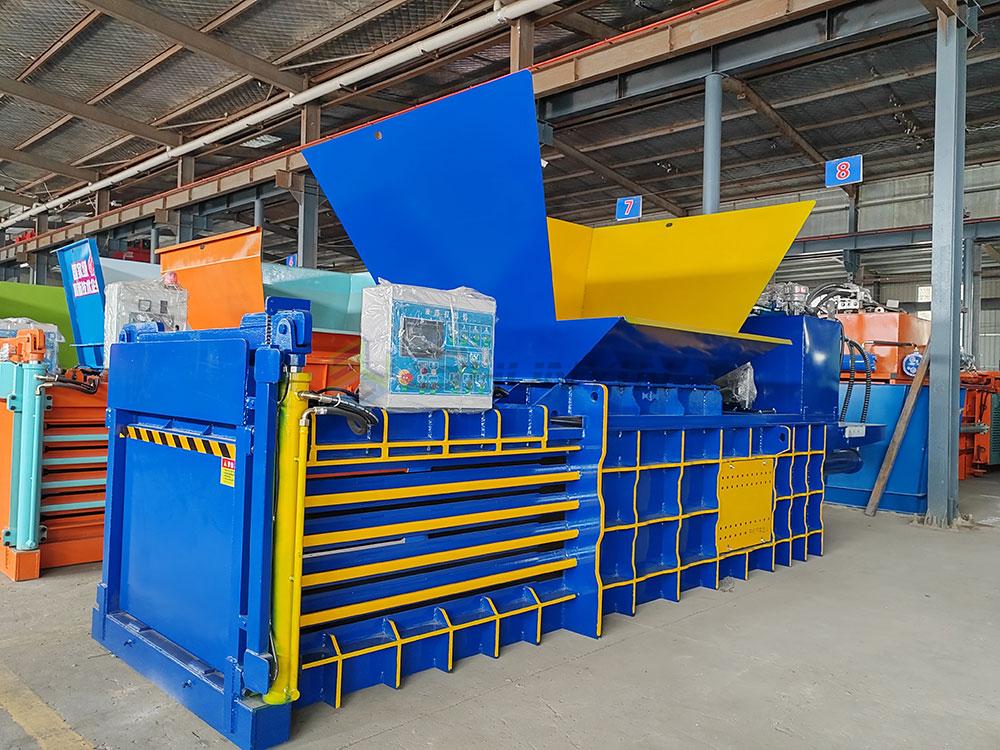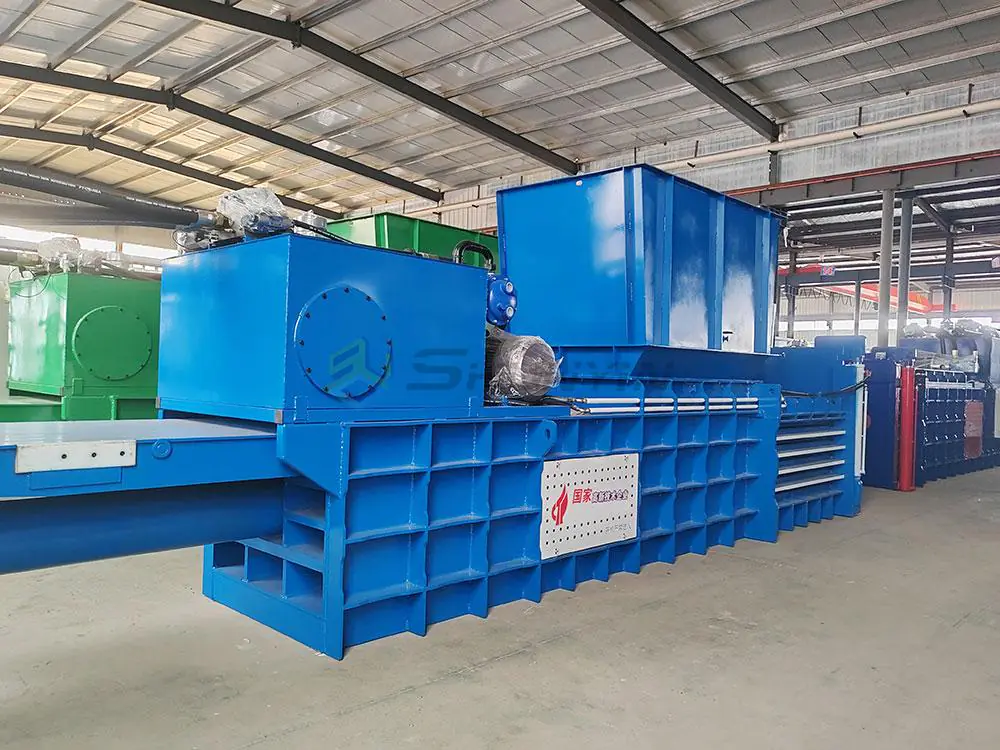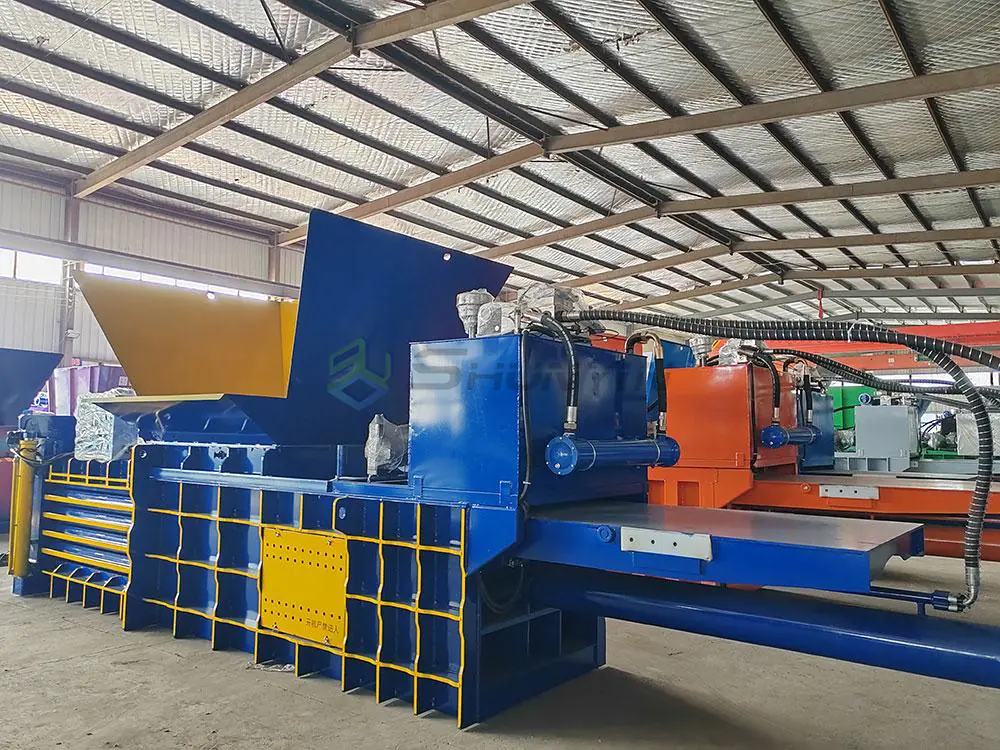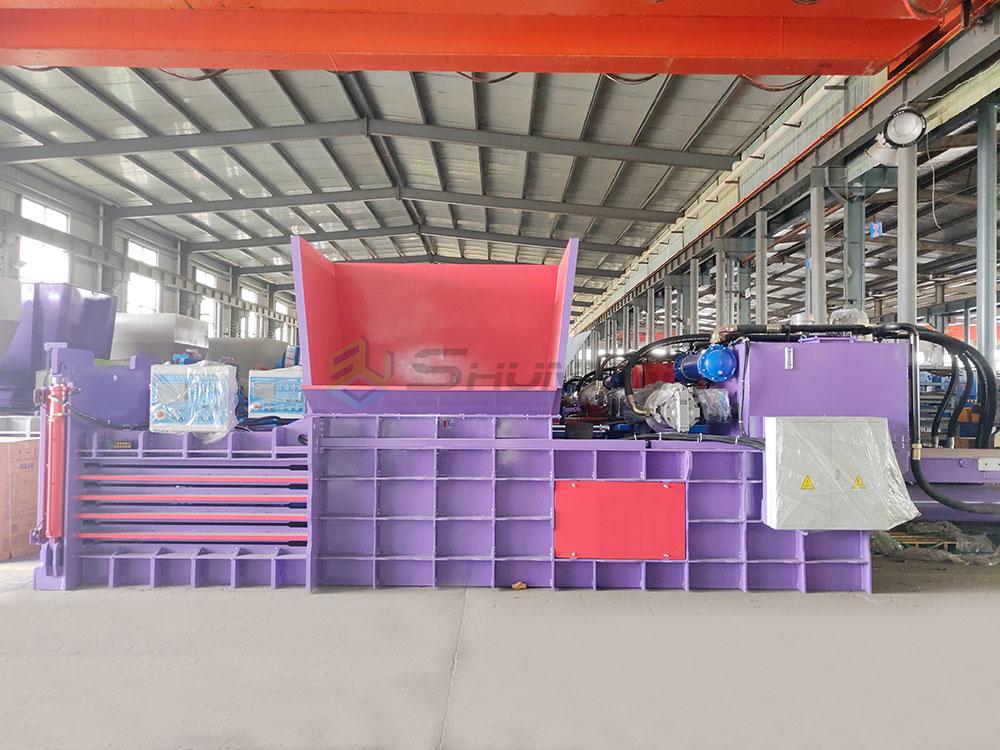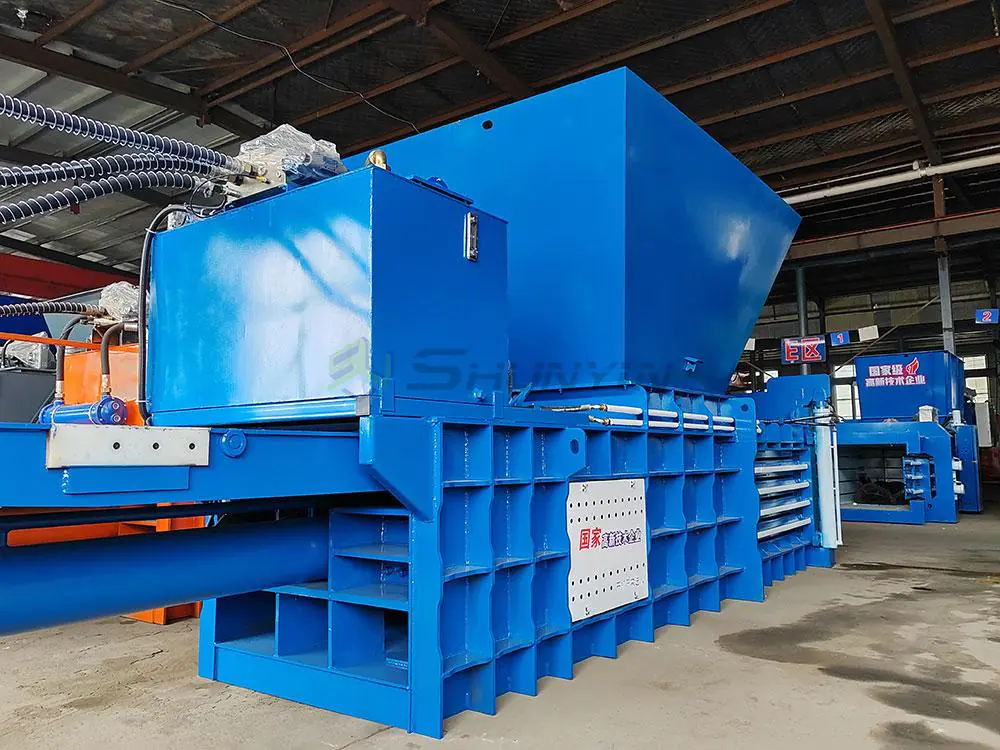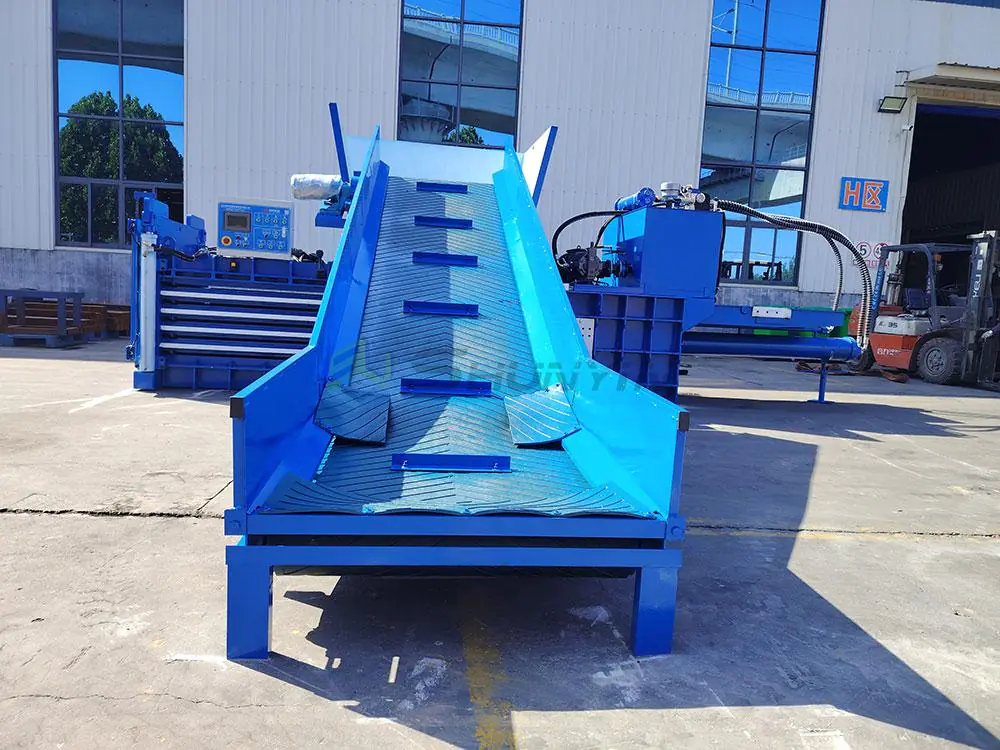
Managing high volumes of waste efficiently is a challenge for many businesses. Without proper equipment, waste accumulates, increasing storage costs and reducing operational efficiency. A closed door horizontal baler offers a structured solution for waste handling.
A closed door horizontal baler reduces waste management costs by producing denser bales, enhancing safety, and optimizing space. Key benefits include:
✅ Higher Bale Density – Stronger compression creates compact, stackable bales, cutting storage and transportation costs.
✅ Improved Safety – Fully enclosed design prevents spillage and minimizes operator exposure to moving parts.
✅ Versatile Waste Handling – Efficiently compacts cardboard, plastics, textiles, and metals, making it ideal for recycling.
✅ Lower Waste Disposal Costs – Produces uniform bales, reducing hauling frequency and landfill fees.
✅ Space Optimization – Keeps waste organized and compact, freeing up valuable storage and workspace.
✅ Durability & Efficiency – Built for continuous operation, minimizing downtime and reducing maintenance costs.
💡 A closed door horizontal baler increases efficiency, lowers expenses, and improves workplace safety, making it an essential solution for waste management.
For businesses producing significant waste, a closed door horizontal baler is a valuable investment. Let’s explore its advantages and how it compares to other types of balers.
What is the difference between a vertical and horizontal baler?
Choosing between a vertical and horizontal baler is a critical decision for businesses. Each has unique advantages depending on waste volume, available space, and operational needs.
A vertical baler is compact, manually operated, and best for low-to-medium waste volumes. A horizontal baler is automated, handles high waste volumes, and offers continuous operation, reducing labor costs. Closed door horizontal balers provide superior compression and better safety features.

Key Differences Between Vertical and Horizontal Balers
| Feature | Vertical Baler | Horizontal Baler |
|---|---|---|
| Size | Small footprint | Requires more space |
| Operation | Manual | Automated |
| Processing Speed | Slower | Faster |
| Labor Requirement | High | Low |
| Waste Volume | Low to Medium | High |
| Bale Density | Lower | Higher |
Why Businesses Choose Closed Door Horizontal Balers
Closed door horizontal balers outperform vertical balers in handling large volumes of waste, making them ideal for industries that require efficient waste processing.
| Business Need | Recommended Baler |
|---|---|
| Small waste output | Vertical baler |
| High waste volume | Horizontal baler |
| Automated operation | Horizontal baler |
| High bale density | Closed door horizontal baler |
A closed door horizontal baler maximizes compression, resulting in heavier and more compact bales, which reduces transportation costs and storage requirements.
What is the useful life of a baler?
Investing in a baler is a long-term decision. Businesses need to understand the expected lifespan of their equipment to maximize returns and plan for future upgrades.
A well-maintained baler can last 10-20 years, depending on usage frequency, material processed, and maintenance quality. Regular servicing extends its lifespan, ensuring continued efficiency and cost savings.

Factors Affecting Baler Lifespan
| Factor | Impact on Lifespan |
|---|---|
| Usage Frequency | Heavily used balers may wear out faster |
| Material Processed | Harder materials (e.g., metal) cause more wear |
| Maintenance Routine | Regular servicing extends machine life |
How to Extend the Life of a Baler
- Perform Routine Inspections – Identify and fix minor issues before they cause major damage.
- Maintain Hydraulic Systems – Replace hydraulic oil regularly to ensure smooth operation.
- Train Operators Properly – Avoiding misuse and overloading increases longevity.
- Use Quality Consumables – High-grade wire and straps help maintain machine performance.
Cost Savings Over Time
A high-quality closed door horizontal baler provides long-term cost efficiency by reducing maintenance costs and minimizing downtime.
| Cost Factor | Without Proper Maintenance | With Regular Maintenance |
|---|---|---|
| Lifespan | Shorter (10 years or less) | Longer (15-20 years) |
| Repair Costs | Higher due to unexpected breakdowns | Lower due to preventive servicing |
| Productivity | Reduced efficiency over time | Consistent high performance |
By maintaining a baler properly, businesses ensure optimal performance and a longer equipment lifespan.
What is the use of a vertical baler?
Small businesses, retail stores, and offices often struggle with managing moderate amounts of waste. A vertical baler provides an efficient and affordable solution.
A vertical baler is used for compacting small to medium amounts of recyclables like cardboard, plastic, and textiles. It is ideal for businesses with limited space and lower waste volumes, offering a cost-effective alternative to horizontal balers.

When to Choose a Vertical Baler
| Business Type | Recommended Baler |
|---|---|
| Small retail stores | Vertical baler |
| Restaurants | Vertical baler |
| Warehouses | Horizontal baler |
Advantages and Disadvantages of Vertical Balers
| Feature | Advantage | Disadvantage |
|---|---|---|
| Space Efficiency | Fits in smaller areas | Limited bale size |
| Lower Initial Cost | Affordable for small businesses | Higher labor costs |
| Ease of Use | Simple manual operation | Requires more manual labor |
Why a Closed Door Horizontal Baler is a Better Alternative for Large Businesses
A closed door horizontal baler offers significant advantages over vertical balers in high-volume operations:
- Higher Compression Power – Produces denser bales, reducing transportation costs.
- Automation – Requires minimal manual labor, increasing efficiency.
- Faster Processing – Can handle continuous waste input without frequent manual operation.
While vertical balers work well for small businesses, closed door horizontal balers are the best choice for large-scale operations.
What is the purpose of a baling machine?
Waste management costs continue to rise, and businesses need efficient solutions to handle recyclable materials.
A baling machine compresses waste into compact, transportable bales, reducing storage needs, lowering transportation costs, and improving recycling efficiency. It helps businesses manage waste effectively while reducing environmental impact.

The Role of a Baling Machine in Waste Management
Baling machines transform loose materials into neatly compressed bales, making waste handling more efficient.
| Function | Benefit |
|---|---|
| Compression | Reduces waste volume significantly |
| Storage Optimization | Maximizes warehouse space |
| Efficient Transport | Lowers logistics costs |
Industries That Benefit from Baling Machines
| Industry | Common Waste Type | Recommended Baler |
|---|---|---|
| Retail | Cardboard, packaging | Vertical baler |
| Manufacturing | Plastic, metal scraps | Horizontal baler |
| Warehouses | Shipping materials | Horizontal baler |
How a Closed Door Horizontal Baler Improves Waste Management
- Increased Bale Density – Closed doors provide uniform compression, ensuring consistently dense bales.
- Improved Workplace Safety – The enclosed design prevents material spillage and operator accidents.
- Faster Processing – Reduces manual labor and increases productivity.
Investing in a baler ensures cost savings, better organization, and improved recycling efficiency.
Conclusion
A closed door horizontal baler provides superior waste management solutions by improving compression efficiency, reducing labor costs, and enhancing workplace safety. Businesses handling high waste volumes benefit from long-term cost savings and increased recycling profitability.


